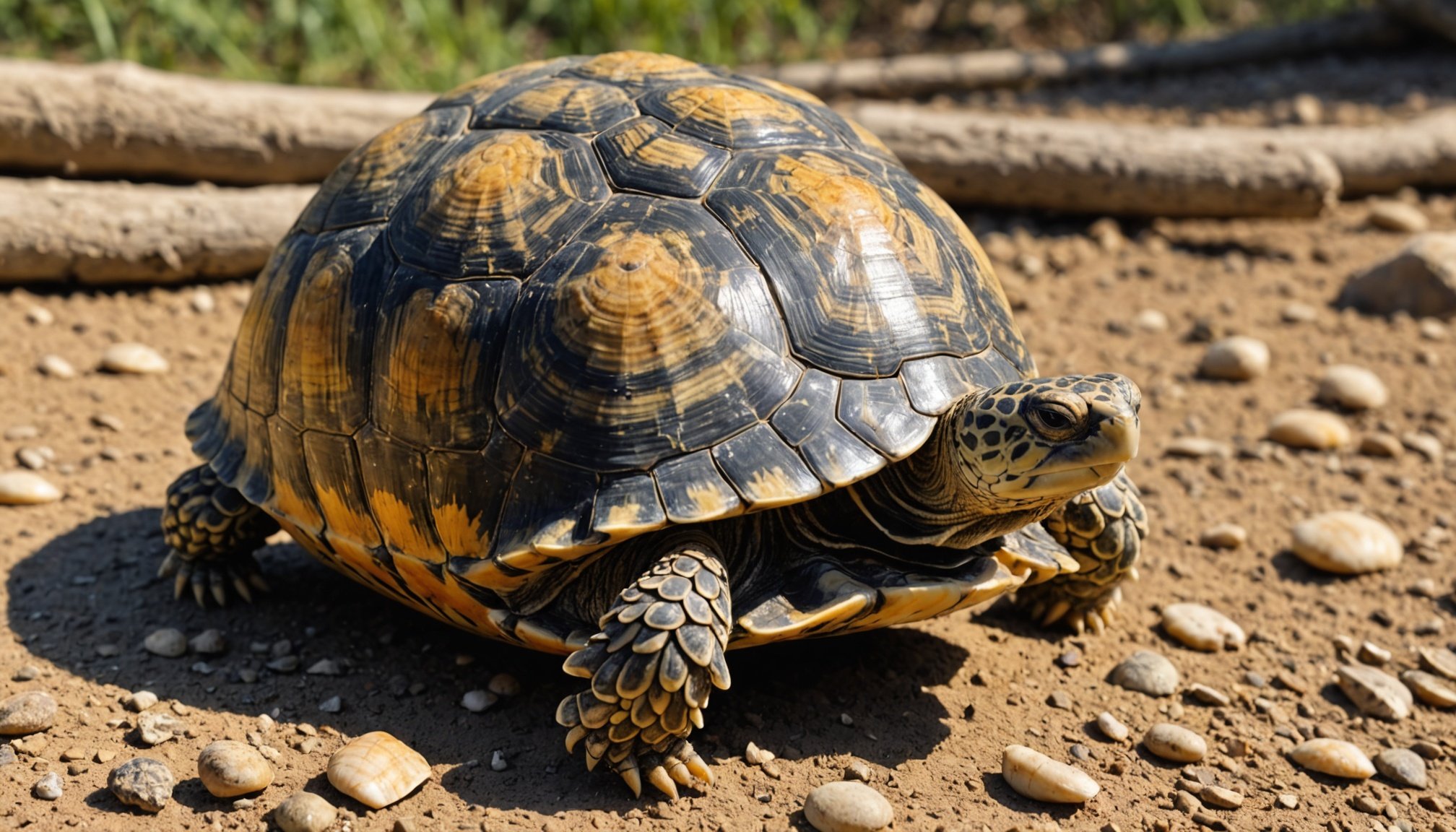Importance of Monitoring Shell Health
Monitoring shell health in tortoises is crucial, particularly for Hermann’s tortoise health. A tortoise’s shell is not merely a protective barrier; it reflects its overall well-being. Maintaining a healthy shell can indicate that the tortoise is receiving adequate nutrition, hydration, and care. In Hermann’s tortoises, a well-maintained shell showcases effective tortoise shell care practices and ensures the animal’s longevity.
When considering the link between shell condition and the overall well-being of a tortoise, it’s vital to understand potential consequences of neglect. An unhealthy or damaged shell can lead to infections and other systemic health problems, negatively affecting the tortoise’s quality of life. Consistent monitoring can prevent such issues by allowing for timely intervention.
A lire en complément : Exploring the impact of city garden hedgehog habitats on wildlife conservation
Neglecting shell health may have long-term implications, such as compromised mobility or chronic health conditions. This oversight can lead to irreversible damage, emphasizing the need for regular and thorough shell inspections. By prioritising tortoise shell care, owners can ensure their tortoise thrives, ultimately enhancing both its lifespan and well-being.
Health Issues Associated with Poor Shell Condition
Tortoises face significant health problems when their shells are not properly maintained. Shell diseases are a common affliction, often resulting from inadequate care and living conditions. These conditions include shell rot, which usually manifests as soft spots, discolouration, or foul odour, often exacerbated by bacterial or fungal infections.
Cela peut vous intéresser : Expert guide to your snake”s shedding: essential tips for a seamless and healthy experience
Poor shell health can lead to noticeable behavioural changes in tortoises. For instance, you may observe a decrease in their activity levels, loss of appetite, or even signs of distress, indicating discomfort and potential health deterioration. As shell integrity compromises, the tortoise’s ability to protect its vital organs also diminishes.
Consider case studies where severe neglect in shell care resulted in drastic outcomes. One documented incident involved a tortoise whose untreated shell rot led to deep tissue damage, requiring extensive veterinary intervention and prolonged treatment. In another instance, prolonged exposure to unsanitary conditions led to systemic infections, underscoring the crucial need for preventive measures.
Understanding the critical importance of shell health in tortoises can prevent these serious issues. Regular inspections and maintaining a clean, dry habitat are vital. Implementing these measures can markedly mitigate the risks associated with common shell issues.
Methods for Tracking and Assessing Shell Health
Understanding the condition of a tortoise’s shell is crucial for their overall health. When considering shell health monitoring, it’s essential to incorporate various assessment techniques.
Visual Inspections
Start by performing regular visual inspections of the shell. Look for abnormalities like cracks, discolouration, or unusual growth patterns. This straightforward method provides an immediate impression of multiple aspects of shell health, helping to catch issues early.
Measuring Shell Hardness
Measuring the shell hardness is another effective technique. Shell hardness is an indicator of calcium levels and overall health. Use a durometer, an instrument designed to measure hardness, for a more accurate assessment. Ensure you measure at multiple points to get a comprehensive understanding.
Regular Check-ups with a Veterinarian
Routine check-ups with a veterinarian play a pivotal role in maintaining shell health. These professionals provide invaluable guidance for routine assessments, tailoring advice to individual tortoise needs. During these visits, the vet can perform more thorough examinations and recommend any additional testing if concerns arise. By integrating professional advice with visual inspections and hardness measurements, you establish a holistic shell health monitoring routine that supports the wellbeing of your tortoise.
Best Care Practices for Hermann’s Tortoises
Taking proper care of a Hermann’s tortoise involves understanding its unique dietary requirements and shell maintenance tips. Hermann’s tortoise health care is greatly influenced by an appropriate diet rich in calcium and vitamins to support shell health. Leafy greens such as kale and dandelion, and occasional fruit treats like strawberries, can be beneficial. Providing access to UVB lighting is crucial, as it synthesises vitamin D3, aiding in calcium absorption.
Environmental factors also play a significant role in maintaining shell integrity. A habitat with a balanced climate, temperature-controlled zones, and access to both dry and moist areas is essential. Humidity levels should be monitored to prevent shell rot, a common issue.
For optimal shell health, regular attention to shell maintenance tips is necessary. Gently cleaning the tortoise’s shell with warm water can remove debris and prevent infections. Incorporating natural products like aloe vera gel can maintain moisture and resilience of the shell. Ensure that any cleaning products used are safe and not harmful to the tortoise’s health. Implementing these tortoise care practices will ensure your pet remains healthy and their shell remains robust and protected.











